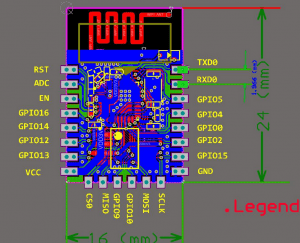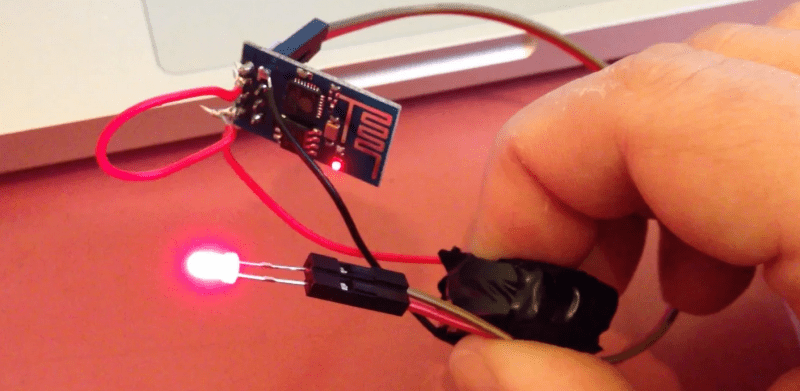
ESP8266 WiFi Module
The ESP8266 WiFi module is a TTL (Transistor–transistor logic) “Serial to Wireless Internet” device. Now your microcontroller has the ability to talk to a TTL serial device.
The ESP8266’s maximum voltage is 3.6V, that means its has a 3.3V regulator to deliver a safe, consistent voltage to the IC. Now, ESP8266’s I/O pins also run at 3.3V and user will have to level shift any 5V signals running into the IC. As it turns out the there is a good reason that some Youtube videos have surfaced recently with developers are trying to churn out 500 meters to a couple miles of transmission capability from this module.
How it works:
The ESP8266 has a full TCP/UDP stack support. It can also be easily configured as a web server. The module accepts commands via a simple serial interface. It then responds back with the operation’s outcome (assuming everything is running correctly). Also, once the device is connected and is set to accept connections, it will send unsolicited messages whenever a new connection or a new request is issued.















What does it means by serial to wireless internet
For a not for profit enterprise in LED lighting for urban push cart vendors I wish to seek the services of a skilled technical expert for designing a system which can control multiple lighting kits spread over a large area from a central processing unit through SMS sent on a GSM network . Essentially it could be a micro controller which can be controlled remotely